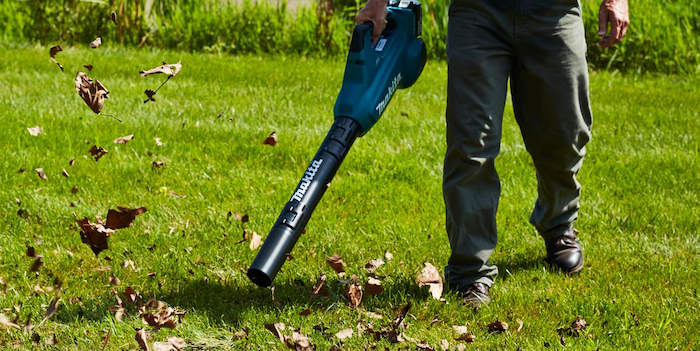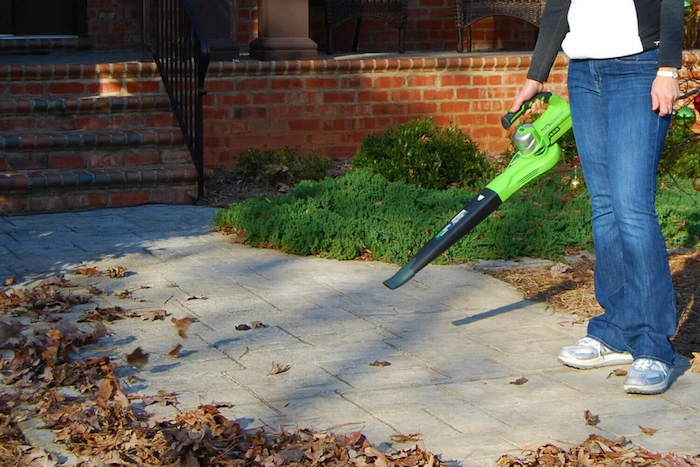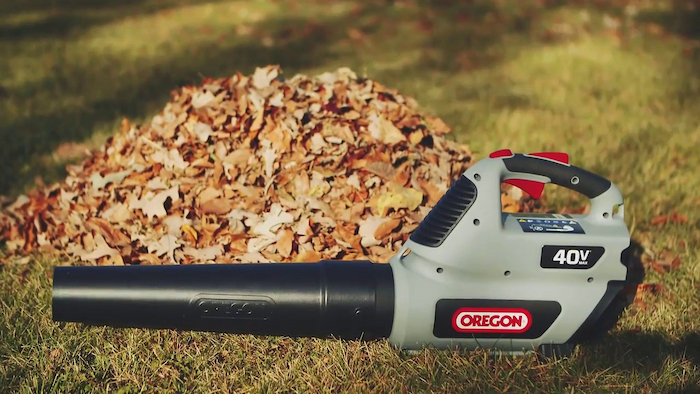Those of us that relish in having an organised garden and take pride in the amount of work we put into the upkeep are very familiar with the frustrations that come with seeing golden leaves piling on the front porch as soon as autumn makes its way through. Sure, the royal hues and crunchy sound they make when you walk over them are pleasant, but who has the time to keep up with the never-ending sweeping and gathering that can take all the joy away pretty quickly.
Not to mention the hassle of taking out a corded leaf blower to keep your yard clean. Dealing with extension cords, tangled wires, and having to find a socket can be an absolute nightmare. At times it feels like it’s just not worth the trouble and you’d rather let the leaves stay on the ground until next year. But that’s exactly what a lightweight and user-friendly cordless blower vacuum can help with.
Are Cordless Leaf Blowers as Powerful as Corded?

source: popularmechanics.com
This is a common concern for individuals looking to make the switch from corded to cordless or choose one over the other. After all, the whole premise of going with the latter is the convenience and freedom it offers you, but does it come with a compromise in power and airspeed?
The truth is that for both options it really depends on the model you choose. Cordless varieties have advanced over the years to become more powerful and efficient in comparison with corded models, so if you get two machines of the same calibre, chances are that they will perform at a similar level.
Key Factors to Consider
With all that said, getting a suitable cordless blower vacuum for your particular needs will depend on several factors. The way the machine handles the tasks you throw at it will depend greatly on its build quality and some of the fundamental aspects of its design, such as:
Power and Airspeed
Perhaps the leading parameter to consider when selecting a cordless leaf vacuum is the power output (measured in volts) and the airspeed it can achieve. The volt rating of a model indicates the power it can generate and, consequently, how efficiently it can clean up leaves either on flat surfaces or in harder-to-reach areas, like edges and corners.
As for the airspeed, it is generally measured in kilometres per hour (km/h) and indicates the speed of air expelled from the nozzle. This figure is particularly important when it comes to removing wet leaves or heavier debris. The higher the airspeed, the better it will be for these tougher jobs.
Battery Life and Charging Time

source: bobvila.com
A cordless vacuum is only as useful as its battery life. Most models are sold with a removable battery that must be charged beforehand so you can use the machine for extended periods of time. The amount of charge it can keep and the time required to fully charge the battery should be taken into account when selecting a model.
You could also go for a petrol blower for extra power and longer run times, thanks to the larger fuel tank. This is essentially the same in terms of operation as the battery counterparts, but due to the fuel-engine setup, it’s generally heavier and noisier.
Weight and Ergonomics
Speaking of weight, how much you can comfortably carry and manoeuvre is another crucial factor. The size of a specific machine depends a lot on the engine and battery type. Cordless leaf blowers are usually much lighter than petrol models, but there are still differences in weight between models of the same type.
Ergonomics are equally important, especially if you plan on using the machine for extended periods of time. Try to go for one that has a rubberised or soft grip handle, an adjustable length tube, and an adjustable nozzle with multiple settings. This way you can adapt the machine to your exact needs, making it more comfortable and suitable for different tasks.
Noise Levels
While many of the garden tools used for yard maintenance, such as lawnmowers and hedge cutters, are relatively noisy, this doesn’t have to be the case with your leaf blower as well. Most models are significantly quieter than other machines and some even feature noise reducers or mufflers.

source: oregonproducts.com
But even so, there’s still a slight difference in noise output from model to model. This specification is often listed in decibels (dB) and the lower the dB rating, the quieter it is. Higher numbers don’t necessarily mean it’s a bad product, but if you plan on using it for extended periods of time or in residential areas, be sure to look out for the noise output parameter.
Nozzle Design and Attachments
The design of the nozzle is crucial as it will determine not only how well the machine can perform its job, but also how easy it is to handle. The ideal nozzle should be adjustable (both in height and angle) so you can get into tight spaces and have the airflow directed just where it’s needed.
Some models have additional attachments that allow you to control the airspeed and use it for other tasks other than vacuuming or blowing, such as dusting or inflating. These can be quite useful if you’re looking for a more versatile machine.
Availability of Replacement Parts and Accessories
While we’re often guilty of going for the first model that catches our eye, it’s important to check for the availability of replacement parts and accessories. Not only will this ensure that you have a backup if something breaks, but it will also tell you how popular the model is and if parts are still being made for it.
While it’s not necessary to buy them right away, make sure that an authorised provider has the parts listed in their store. This way you know that if something goes wrong, you’ll be able to fix it quickly and keep your machine in top shape.












